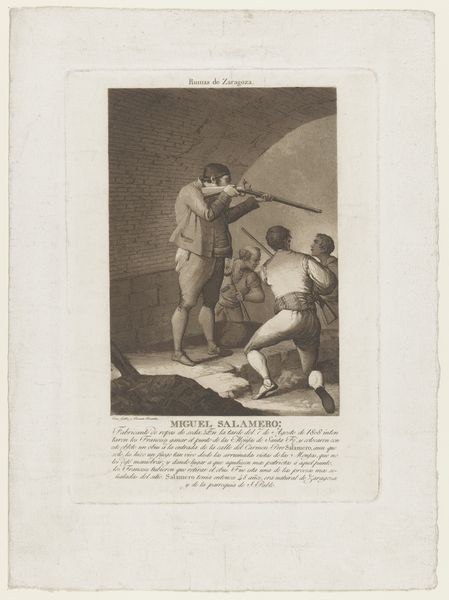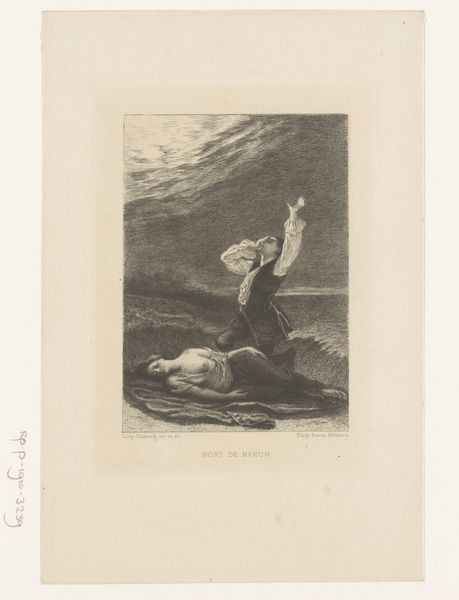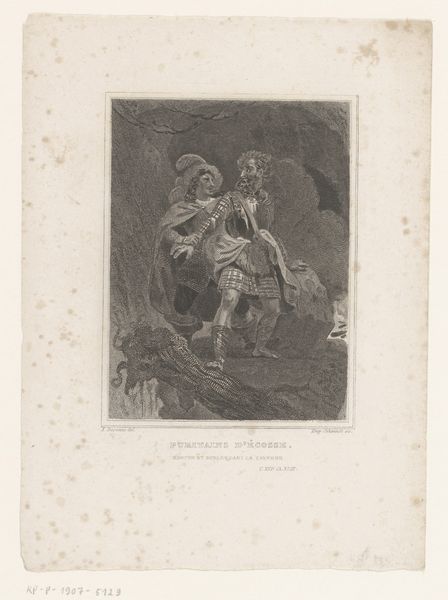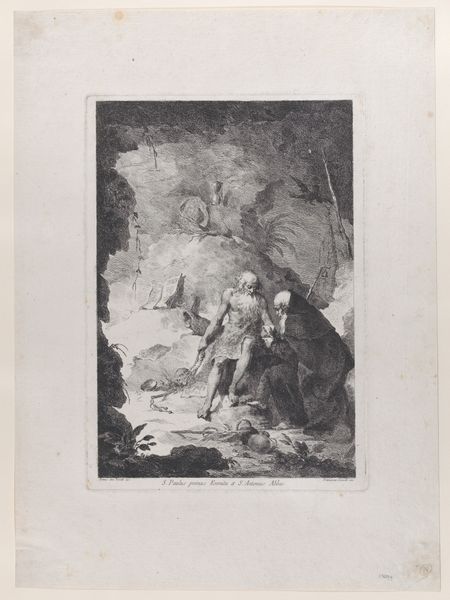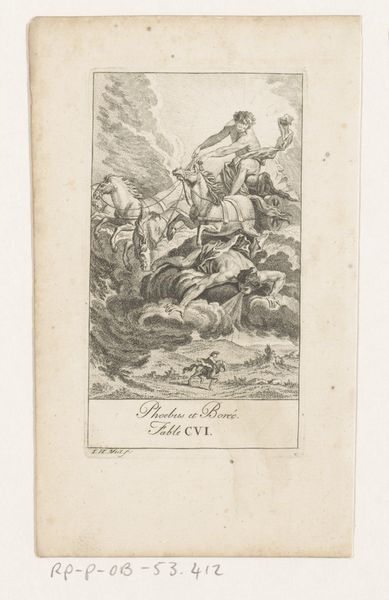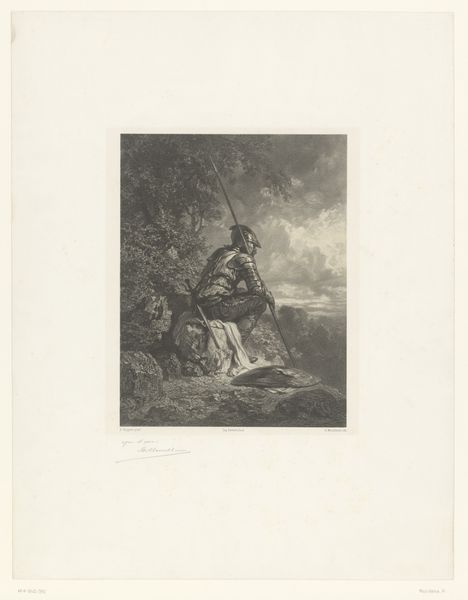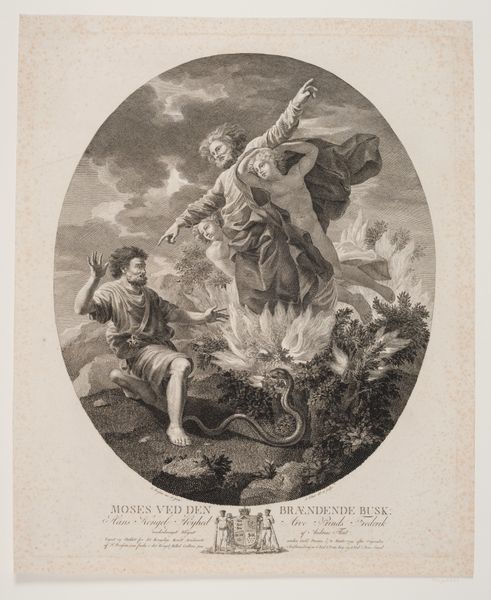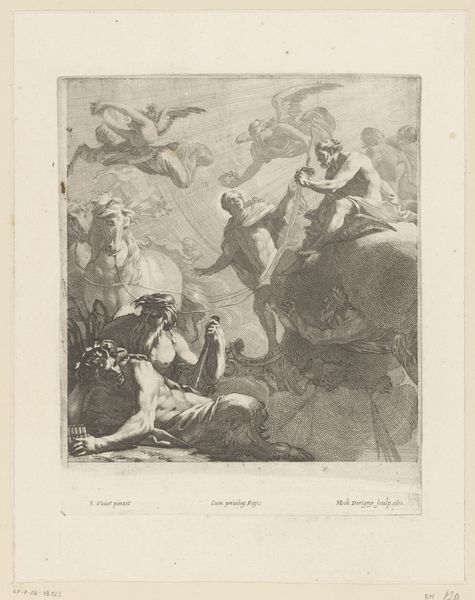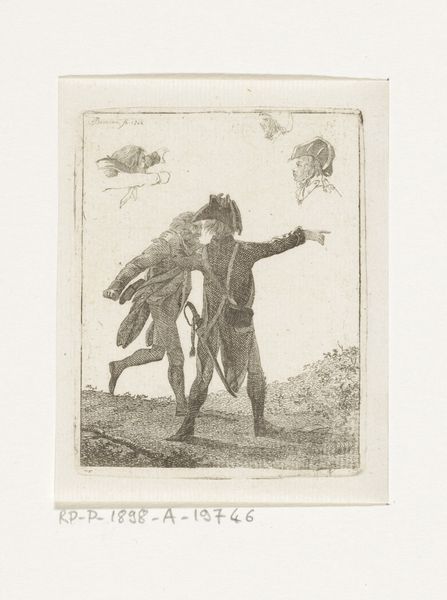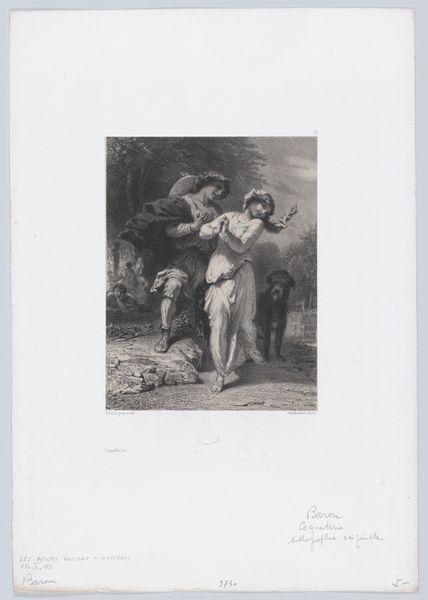
drawing, print, engraving
#
drawing
# print
#
figuration
#
romanticism
#
history-painting
#
engraving
Dimensions: Sheet: 14 11/16 × 10 11/16 in. (37.3 × 27.2 cm)
Copyright: Public Domain
Editor: This is "Métabus," an engraving made by Louis Jean Désiré Delaistre sometime between 1825 and 1835. The figure of Métabus is so dramatic! Standing powerfully amidst a chaotic landscape. How should we interpret the scene, considering its time? Curator: Considering the Romantic era context, it's crucial to view this engraving as a political and social statement as much as an aesthetic one. Notice how Métabus, though presented as a heroic figure, also embodies a rejection of societal norms. The composition, with its dramatic lighting and turbulent background, emphasizes individualism and emotion—hallmarks of Romanticism that often served to critique established power structures. Editor: So, it's not just about the heroic figure, but also a commentary on the institutions of the time? Curator: Precisely! Romantic artists often used historical or mythological subjects to comment on contemporary issues. Think about the social disruptions and revolutions occurring then. How might the figure of Métabus, isolated and defiant, resonate with an audience grappling with political upheaval and questioning traditional authority? Editor: That makes so much sense! The print feels much more radical now. Are there any particular symbols that point toward that meaning? Curator: Well, observe the child he carries. Some might argue it represents a fragile future, dependent on Métabus's resilience. However, it also begs the question: what social structures have led to this vulnerability? Consider how prints like these circulated widely, influencing public opinion and shaping cultural values. The museum exhibiting it then… how does the institutional framing affect our understanding now? Editor: I never thought about that aspect! I suppose every detail helps reinforce or challenge conventional views, including where we encounter the artwork. Curator: Indeed. Context shapes perception. Thinking critically about how museums present works, and whose stories are amplified, helps us understand art's enduring relevance. Editor: Thank you! I see how social context unlocks such deep meaning in artworks. It changes everything about how I look at art.
Comments
No comments
Be the first to comment and join the conversation on the ultimate creative platform.
